
Pablo del Pino, my uncle, checks the corporal temperature of his brother at the geriatric ward of the hospital a few days before my father was discharged from the medical institution. Throughout his hospitalization, my father suffered severe fevers, which were difficult to control due to the scarce antipyretic medicines available at the hospital. Cataplasms were the alternative to relieve his hyperpyrexia periods.
"Vete a casa y que Dios te acompañe" (Go home and may God be with you) is a photographic essay about the abandonment of patients who suffer terminal illnesses and their right to a dignified death.
The proposal explores the emotional, psychological, and social traumas derived from the forced cessation of palliative care in patients who suffer terminal illnesses, a terrible practice developed by medical institutions in some countries worldwide. Under the rules of a dehumanized bureaucratic power, these medical institutions decide how, when, and where individuals will pass away.
Portrait of Juan del Pino, my father, in a bed at the geriatric ward of the Joaquin Albarran hospital in Havana during the final days of his hospitalization on September 26, 2021. When this portrait was taken, he had already been diagnosed with lung cancer.
"In September 2021, while COVID-19 hit Cuba the hardest, I began to take photos of my father and some objects that accompanied him during his hospitalization period. These would be the last photos I would take of him. He died at home a few weeks later.
According to the medical report, lung cancer killed him and probably COVID-19 accelerated his death. But the malignant tumor wasn't the only cause; the indifference and the abhorrent policies of institutional bureaucracy worsened his health and were ultimately responsible for his death.
This story is from the November 2022 Humanity edition of Lens Magazine.
Start your 7-day Magzter GOLD free trial to access thousands of curated premium stories, and 9,000+ magazines and newspapers.
Already a subscriber ? Sign In
This story is from the November 2022 Humanity edition of Lens Magazine.
Start your 7-day Magzter GOLD free trial to access thousands of curated premium stories, and 9,000+ magazines and newspapers.
Already a subscriber? Sign In

IN THE SHIPYARDS OF DHAKA
A very large shipyard in Dhaka is located on the Buriganga River's banks, directly across Dhaka's old city.
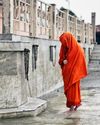
Aga Szydlik INDIA
A JOURNEY INTO THE LAND OF DIVERSITY, CULTURE, AND COLORS
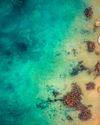
SEBASTIAN PIÓREK EXPLORING Enjoyable LANDSCAPE
I retrieved the idea of nature closely linked to the field of human feelings.
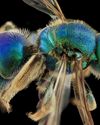
The Extreme Macro Photography of Bees
AN INTERVIEW SAM WITH, DROEGE
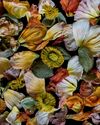
JEAN KAROTKIN GYMNOPEDIES
Gymnopédies, Karotkin's ongoing series of botanical portraits, takes its name from a trio of piano compositions by 19th-century French composer Erik Satie.

BUTTERFLIES IN LOVE WITH FLOWERS
I sometimes think Chinese art is not fully appreciated in the West. I was exposed to it growing up in Australia, although my fascination was more with calligraphy.

Lissa Hahn:
Hahn: HOW TO EVOKE A PAVLOVIAN RESPONSE IN HUMANS

AN EXCLUSIVE INTERVIEW WITH ELENA PARASKEVA
Elena Paraskeva is an internationally acclaimed, award-winning Conceptual Photographer and Art Director and, most recently, an official ADOBE instructor.

From a Living Hell to Heaven on Earth: the Inhumanity and Humanity of Humans
In a remote area of western Wisconsin, dogs and cats who otherwise would have ended up on death row are given a reprieve. They can now live out their lives in peace and comfort and with companionship at Home for Life (HFL), which was not afforded them outside the sanctuary's gates.
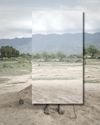
The Art of DISAPPEARING
In the classical proposal, indigenous people are usually the topic of discussion, but rarely do they have a hand in shaping it.